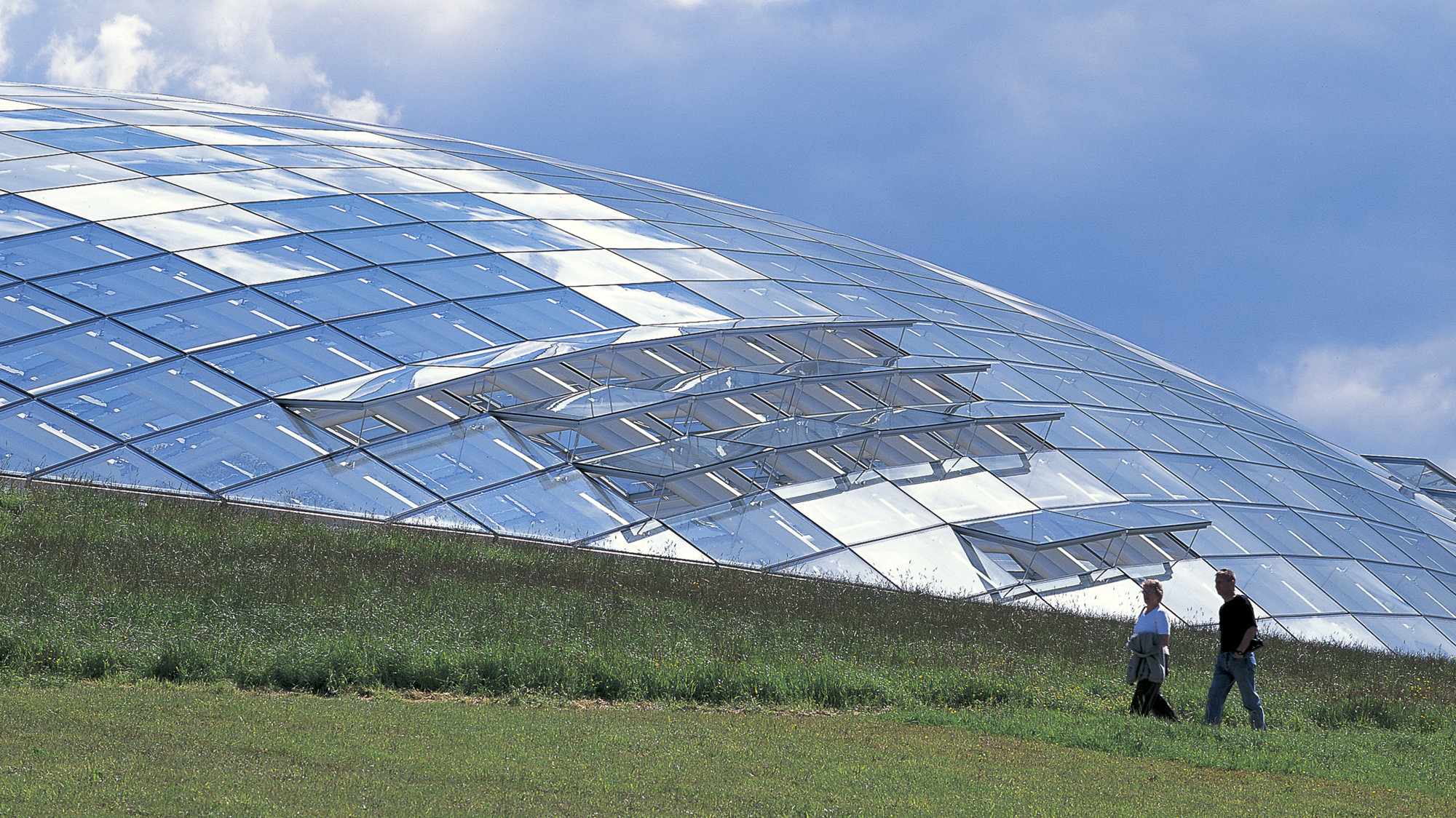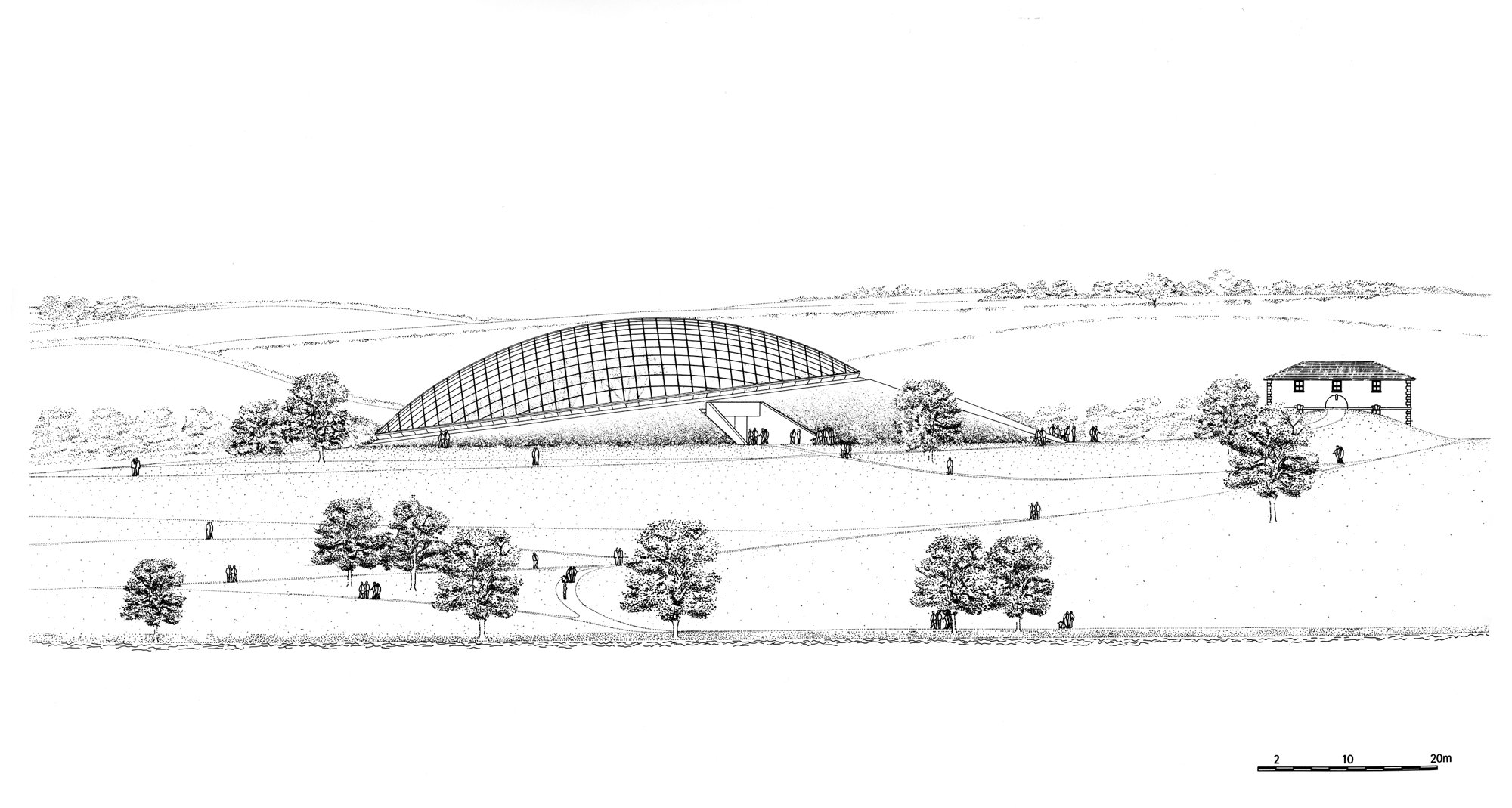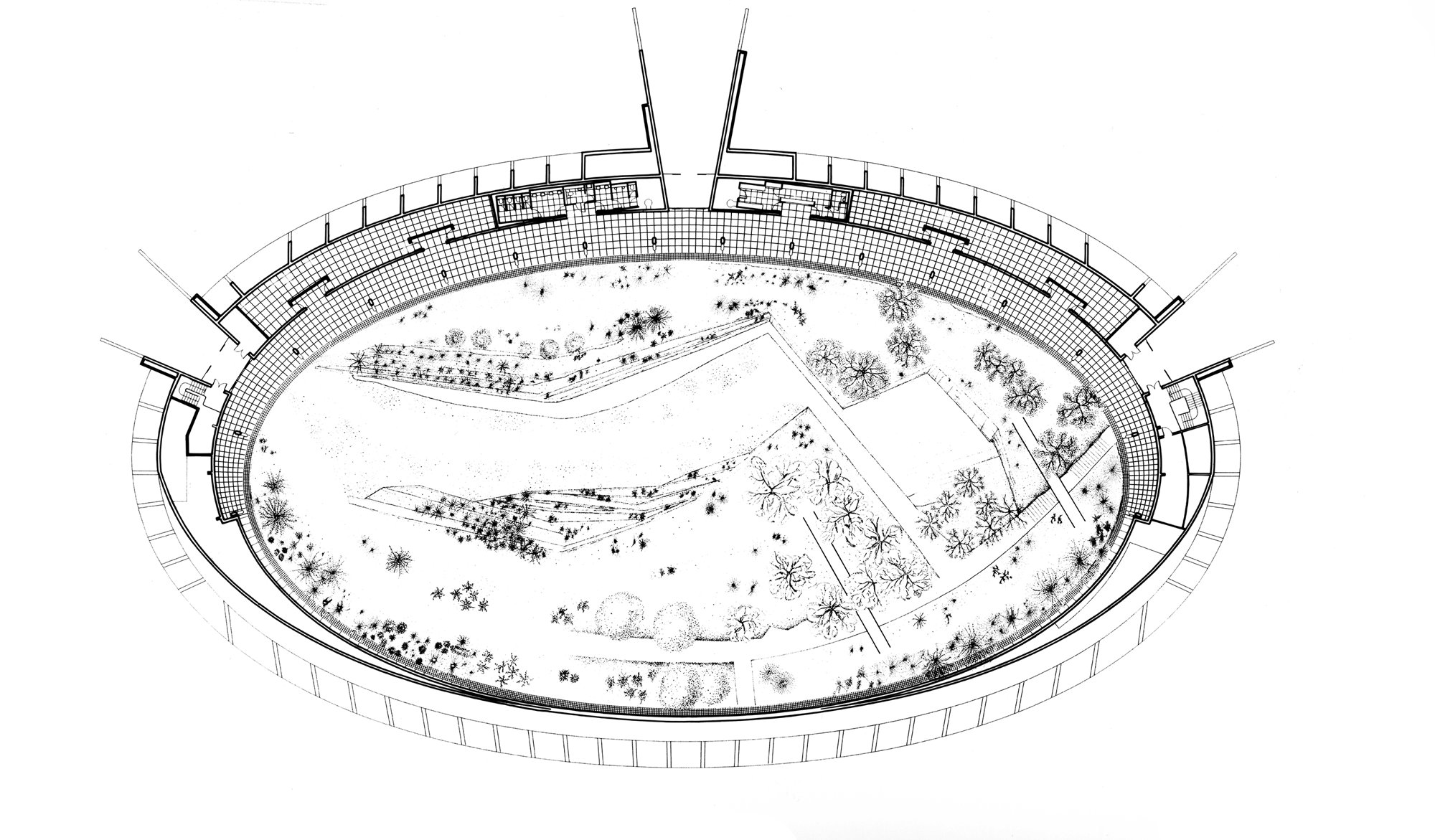World's Largest Single-span Glasshouse Structure
The Great Glasshouse is a work of Foster + Partners that sits in the Tywi Valley making it the National Botanic Garden of Wales. The wide-span botanic garden building protects more than a thousand plant species, many of which are threatened with extinction. The plant species conserved and exhibited at the botanic garden include plants from Mediterranean climate geographies, such as South Africa, Australia, Chile, California, and the Canary Islands. This building also include facilities such as a café, education rooms, and services. The Great Glasshouse has received numerous awards since its establishment from 1995-200 and is the largest single-span glasshouse in the world.

Glass Panel (cr: Foster + Partners)
The shape of the glasshouse building is elliptical with a curved glass structure forming a hill that blends with the surrounding hills typology. The use of glass material as the main substance in the building produced high thermal inside the building. However, energy optimization is done with a computer control system. This system will adjust temperature inside and outside by opening square-shaped glass panels on the roof to adjust temperature, humidity, and air movement needs inside the building.
The use of glass in botanical buildings controls temperature, humidity, and light intensity required for plants to be protected. Each tropical and subtropical plant requires specific climatic conditions. Besides being beneficial for environmental control, the use of glass also protects plants from pests and diseases.

Glasshouse Elevation
 Glasshouse Plan (cr: Foster + Partners)
Glasshouse Plan (cr: Foster + Partners)
The building's frame structure is a lightweight steel frame able to form curves. Standing on an area of 230 hectares, the building is 95 meters long and 55 meters wide. The building's upper structure is supported by 785 glass panels with 24 aluminum arches and has a height of 15 meters.

Garden (cr: Foster + Partners)
Vegetation arrangement's concept in the botanical garden is to create a barrier-free space, zoning the greenhouse into an area with one integrated climate. The planting is adjusted in shape, density, and color, not by plant species. New horizons are created beneath the glass panels by adding complementary elements to the landscape, including bridged areas with streams and waterfall where one once stood or had on a terrace.










Authentication required
You must log in to post a comment.
Log in